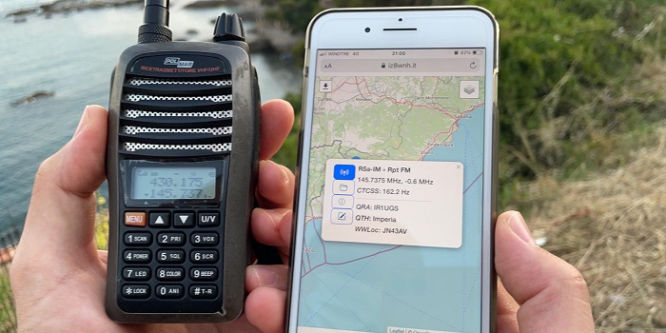Tanjung Malim, a charming town in Malaysia’s Perak state, is not only known for its cultural heritage and educational institutions but is also a thriving hub for amateur radio enthusiasts. This article dives into the Tanjung Malim radio amateur frequency, offering insights into its significance, usage, benefits, and best practices for amateur radio operators.
What is Amateur Radio?
Amateur radio, commonly known as ham radio, is a popular hobby and community service that connects people through radio communications. Ham radio operators use designated radio frequencies to communicate locally, nationally, and globally. These frequencies facilitate communication during emergencies, provide educational opportunities, and allow hobbyists to explore the science of radio technology.
The Importance of Tanjung Malim Radio Amateur Frequency
Tanjung Malim radio amateur frequency serves as a dedicated range for radio operators in the area. With active enthusiasts regularly communicating on this frequency, it fosters a sense of community, promotes technical knowledge-sharing, and offers a platform for emergency communications.
Key Features and Uses of Tanjung Malim Radio Amateur Frequency
- Local and Regional Communication
Amateur radio operators in Tanjung Malim use specific frequencies to connect with nearby ham operators, exchange ideas, and discuss topics of interest. These frequencies can serve as a vital resource for maintaining communication networks within the community. - Emergency Communication Network
During natural disasters or local emergencies, the Tanjung Malim radio amateur frequency acts as a critical lifeline for communications. When mobile networks fail or experience congestion, ham radio operators provide real-time updates, coordinate rescue efforts, and support first responders. - Experimentation and Skill Development
Amateur radio offers an excellent platform for technical experimentation, allowing enthusiasts to explore various aspects of radio propagation, antenna design, signal processing, and more. The frequency dedicated to Tanjung Malim provides an opportunity for hands-on learning and innovation. - Public Service and Events
Ham radio operators often volunteer their services at public events, assisting with communication logistics and safety. This helps ensure seamless coordination and can be especially beneficial during parades, marathons, and other large gatherings.
Licensing for Radio Amateur Operators in Malaysia
Before using the Tanjung Malim radio amateur frequency, individuals must obtain a license. In Malaysia, the Malaysian Communications and Multimedia Commission (MCMC) oversees the licensing process. There are different categories of licenses available, such as:
- Class A License: This license is for experienced operators who have passed advanced examinations and are permitted to operate on high-frequency (HF) bands.
- Class B License: This is typically for beginners who have passed the entry-level examination. Class B license holders can operate on VHF (Very High Frequency) and UHF (Ultra High Frequency) bands.
Choosing the Right Equipment for Tanjung Malim Radio Amateur Frequency
To effectively communicate on the Tanjung Malim radio amateur frequency, you need the right equipment. Here are the key components:
- Transceiver
A transceiver is the core piece of equipment used by amateur radio operators. It combines a transmitter and receiver into one unit, allowing you to send and receive signals over designated frequencies. - Antenna
The type and placement of your antenna significantly affect your communication range and signal clarity. Vertical antennas, dipole antennas, and Yagi antennas are popular among amateur radio operators in Tanjung Malim. - Power Supply
Most transceivers require a stable power source. Operators often use DC power supplies, battery backups, or even solar power for off-grid operations. - Microphone and Keyer
Depending on your mode of communication—voice or Morse code—a microphone or keyer may be necessary. - Antenna Tuner
An antenna tuner ensures your antenna operates efficiently by matching impedance, reducing losses, and improving signal transmission.
Frequencies Commonly Used by Radio Amateurs in Tanjung Malim
While the exact Tanjung Malim radio amateur frequency may vary, it typically falls within the internationally recognized bands allocated for amateur radio use. These include:
- VHF Band (144-148 MHz): Ideal for short to medium-range communication, the VHF band is widely used by ham radio operators in urban and semi-urban areas.
- UHF Band (420-450 MHz): This frequency range offers reliable communication in dense areas and buildings, often utilized for local communication.
Amateur radio operators can also use repeaters to extend the range of their transmissions. These devices receive a signal and retransmit it at a higher power, allowing for broader coverage.
Benefits of Joining Tanjung Malim’s Amateur Radio Community
- Knowledge Sharing
Becoming part of the Tanjung Malim radio amateur frequency network allows operators to learn from experienced members. Mentorship and technical advice are readily available. - Community Building
Engaging with like-minded individuals fosters friendships and builds a supportive community. Enthusiasts often organize meet-ups, workshops, and field days. - Access to Technical Resources
Many amateur radio clubs provide access to tools, antennas, and testing equipment that individual members might not own. - Volunteering Opportunities
Ham radio operators can participate in public service events and emergency response activities, making a positive impact on the community.
Best Practices for Operating on the Tanjung Malim Radio Amateur Frequency
- Follow Protocol
Adhere to the standard operating procedures established by local radio clubs and the MCMC to ensure clear and respectful communication. - Keep the Frequency Clear
Avoid monopolizing the frequency and allow other users access. When finished with your transmission, indicate that the frequency is open. - Practice Good Etiquette
Use polite language, avoid conflicts, and help new operators feel welcome. - Regular Equipment Maintenance
Clean and test your equipment regularly to ensure optimal performance on the Tanjung Malim radio amateur frequency.
Conclusion
The Tanjung Malim radio amateur frequency offers much more than just a means of communication; it is a platform for community building, technical learning, and public service. By becoming an amateur radio operator in this region, you not only gain access to a supportive network of like-minded individuals but also contribute meaningfully to society, especially during times of need. With the right equipment, licensing, and commitment to good practices, you can fully harness the power of ham radio in Tanjung Malim and beyond


